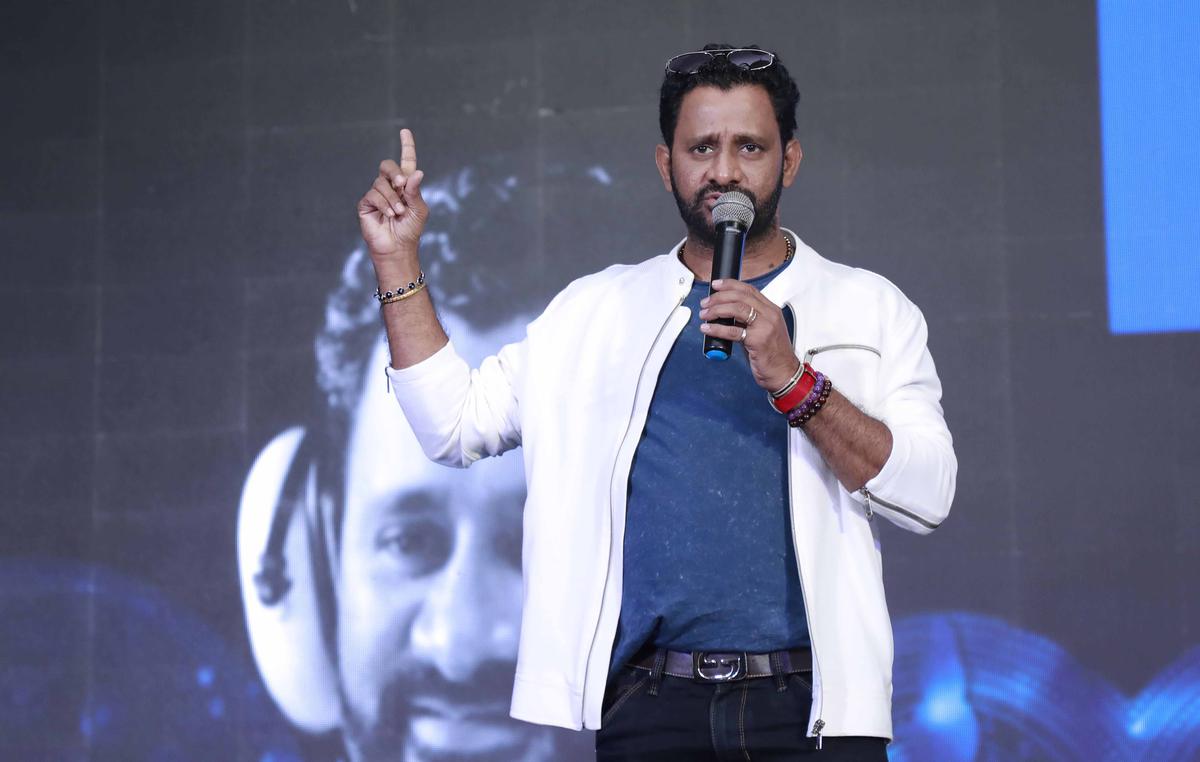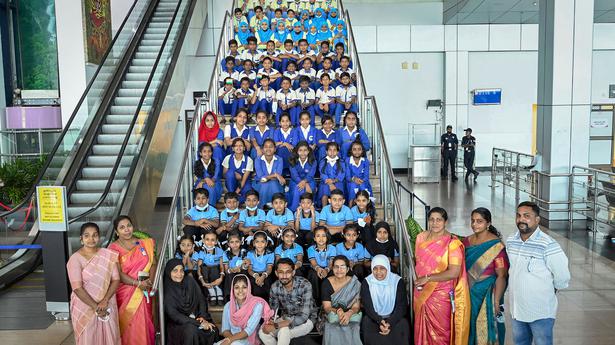The movie’s soundscape brings to mind Danny Boyle’s 2010 film ‘127 Hours’, both incidentally scored by A.R. Rahman
The movie’s soundscape brings to mind Danny Boyle’s 2010 film ‘127 Hours’, both incidentally scored by A.R. Rahman
In the recent Fahadh Faasil-starrer Malayankunju, set against the calamitous landslides across Kerala in 2019, the full force of the natural disaster is felt like a violent jolt. We hear nothing for a few seconds before and after Faasil’s house comes crashing down. Sound, both the presence and absence of it, plays one of the leading roles in the Malayalam survival thriller directed by debutant Sajimon Prabhakar.
It is rare to find modern-day cinema where sound is not just in the background, providing support, but very firmly in the driver’s seat, taking the plot forward. Sound designer Vishnu Govind, who won this year’s National Award for Audiography for his work in Malik, also headlined by Faasil last year, says the sound of the rain was the build-up to the central event — the landslide — in Malayankunju. “I recorded all the sounds of the rain and thunder you hear in the film. I gave A.R. Rahman sir an audio file with all the effects I had used, and he shared the music with me,” says Govind. Incidentally, this film marks Rahman’s return to Malayalam cinema as composer after 28 years.
As the audience witnesses Faasil’s character, Anikuttan, fighting against the elements to find his way out of the debris, it brings to mind the nerve-racking ordeal faced by James Franco’s character as he is trapped in a rockslide in Danny Boyle’s 2010 film 127 Hours, also scored by Rahman. The powerful sonicscape created by the downpour in Malayankunju is comparable to the sound in 127 Hours, of the rain beating over the red earth of the Bluejohn Canyon in Utah and the gushing floodwater in the gruelling climax.
If in 127 Hours, award-winning sound engineer Glenn Freemantle and his team built an artificial canyon from a “tonne of rocks and stones” to replicate the form of boulders within which different sounds were recorded, in Malayankunju, Govind gives us a sense of being trapped with Anikuttan by brilliantly crafting silences into the film.
“The feeling of claustrophobia was created by these silences. No sound or the sound of silence enhances the viewer’s experience, especially when you want to feel the impact of something big,” he says. “I had just a few seconds to deliver the sound of the house crashing in the landslide.” Govind also mixed the sound in the film, using Dolby Atmos, an immersive sound format.
Sound designers Vishnu Govind (left) and Sree Sankar on a recording assignment.
| Photo Credit: Special Arrangement
The conversations between the filmmakers and the sound crew are an integral part of the filmmaking process, says Govind. “We were in constant talks with Mahesh Narayanan (writer of Malayankunju) and director Sajimon for a year since the start of the film, about the kind of sound we wanted to use.” he says.
Compelling stories: Resul Pookutty
Academy award winner Resul Pookutty, who won an Oscar for his work in Boyle’s 2008 film Slumdog Millionaire, writes about trying to understand the director’s requirement, in his 2012 autobiography Sounding Off: The Memoirs of an Oscar-winning Sound Designer: “I had to go beyond recording the cinema, and instead, first know how space functions in a particular scene and understand how the cinematic elements are going to perform in that space.” At all points, Pookutty would ask Boyle what kind of sound he wanted, he writes in the book.

Resul Pookutty
Pookutty commends the work being done by sound designers such as Govind in contemporary Malayalam films. He believes that the 80s were the golden period for Malayalam cinema and raised the bar for sound design in the industry.
“The right sound with the right memory stays with you. I still remember the sound of the ship creaking when (Prem) Nazir is introduced in the film Padayottam (1982). In Adoor Gopalakrishnan’s Elippathayam, sound is used to portray a new dimension that is not part of the script,” he says, referring to the Malayalam film released in 1982, where the protagonist, a feudal patriarch whose days of wealth are behind him, finds a stone in the rice as he has his meal. “What bigger statement than the sound of the stone hitting the teeth to show a Nair family in decline?” says Pookutty.
In the multiverse that is the Indian film industry, with regional cinema stepping out of Bollywood’s shadow, Pookutty feels that some of the most compelling stories are being told by Malayalam films.
Malayankunju, for instance, follows the character arc of a protagonist struggling with his inner demons after his father takes his own life. And the movie uses dramatic horns, tense drum beats and haunting vocals led by the sound of a baby crying to carry the audience along as the story gathers pace. “Rahman sir has added his magic in the parts that needed an emotional edge,” says Govind, who has worked with sound designer Sree Sankar on the film.
Just like in 127 Hours, here too, it is the triumph of the human spirit and the universal feeling of hope and compassion that resonates with audiences, making Malayankunju a film for the times.
The writer is the former editor of ‘Rolling Stone India’ and teaches journalism at FLAME University.






